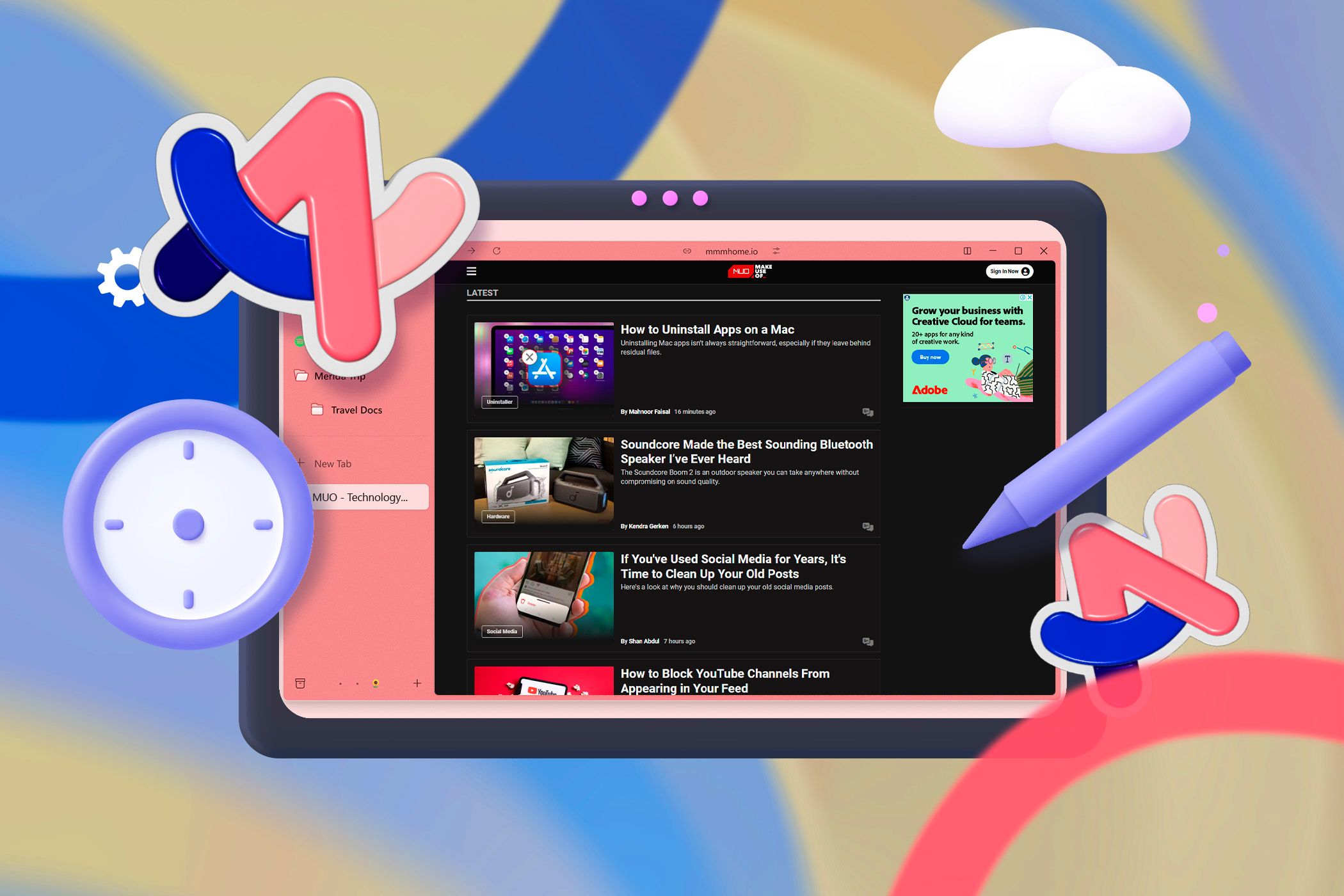After Arc’s slow fade into maintenance mode, I was curious to see what The Browser Company would do next. I was hoping for the next great browser, but what I got instead was something far less exciting.
What Is Dia?
Dia is the brand-new Chromium-based browser from the same people who built Arc, and it’s supposed to be the next big thing in browsers. But instead of focusing on productivity and slick design like Arc did, Dia has jumped headfirst onto the AI hype train. This time around, The Browser Company wants your browser to be less about organization and more about conversation.
The main positive Dia has going for it is how you talk to the browser. No matter what you’re looking at, Dia tries to understand the context and lets you ask questions about it through an AI sidebar. It uses a large language model (LLM) to answer questions about your current tab—or even multiple tabs at once. You can also upload documents from your computer, which Dia can use to add more context to its responses or help you generate new content based on what you’re working on.
There’s also a feature called Skills, which are essentially community-created prompts you can add to Dia to customize what the LLM can do. If you’re curious, check out Dia’s Skills page to see some examples.
It can also detect when you’re performing a search, then determines whether your query is better answered by a traditional search engine or an AI assistant. You’ll see results from either Google or the LLM accordingly.
There are also ways to fine-tune the AI’s personality: you can tell Dia how you want it to write for you, or what kind of tone and formatting you prefer. If you’re generating code in your browser’s sidebar (for some reason), you can set preferences for that too.
You get the vibe—this is a browser built entirely around generative AI. And that’s precisely where it starts to crumble, because beyond the AI, there isn’t much else going on.

Related
One of the Best Chrome Alternatives Is Dead, but You Have Other Options
Arc was bold and full of promise—until it wasn’t.
Dia Offers Nothing That Made Arc So Good
As someone who has been using Arc since its beta days and fell in love with it the moment I tried it, Dia is frustrating. It’s completely devoid of the magic that made me stick with Arc. It feels stripped of almost every single element that made Arc the perfect browser for me. There are so many Arc features that other browsers should copy, and Dia has none of those.
The biggest loss is the sidebar, because Arc’s sidebar was easily its best feature. You could pin tabs, create folders, organize everything neatly, and switch between spaces and profiles effortlessly. It was the smartest and most fluid take on a vertical tab system I’ve ever used. But Dia threw it all away.
Yes, Dia technically does have a sidebar if you prefer vertical tabs, but it’s just a plain list of open tabs. Nothing like Arc’s thoughtful and flexible layout; it might as well be Safari at that point.
And that’s just the beginning. Little Arc, the separate mini window that opened when you clicked links from other apps, is gone. The way Arc let you search without losing your current tab is gone. All those subtle, delightful touches that made browsing better have simply vanished.
In return, you get Dia’s AI suite. But every one of these features could have been integrated into Arc. There was no need to build a whole new browser just to showcase them.
The most confusing part is that Arc already had great AI features! It automatically organized your tabs into categories, suggested cleanup actions, and performed all kinds of other useful tasks.
Yet somehow, none of that carried over into the new “AI-first” browser. They tossed out genuinely helpful AI tools and replaced them with… an LLM wrapper? Generative AI is already ruining social media, and now it’s here to make the entire internet worse.

Related
I Tried Vertical Browser Tabs but Am Going Back to Horizontal: Here’s Why
Vertical tabs are useful, and I want them to work. But ultimately, I’m heading back to the tried-and-tested horizontal tabs.
I’d Rather Just Use Safari (or Any Other Browser)
Unfortunately, as much as I want to keep using Arc, it doesn’t make sense to anymore. It’s only getting basic maintenance and Chromium updates, and over time, it has become noticeably slower. I often run into performance issues, so it’s time for me to move on to something else.
But that something else is definitely not going to be Dia. In the big picture, it doesn’t offer much. Even though it performs slightly better than Arc, it still lags behind other browsers like Safari or even Chrome, which is already known for being heavy on memory.
Dia’s entire idea and direction feel unstable. The Browser Company is stepping away from the productivity niche and trying to compete directly with tech giants like Microsoft and Google. That’s a tough sell. Microsoft has already announced Copilot Mode in Edge, which basically accomplishes the same goal Dia is aiming for. I wouldn’t be surprised if Chrome adds something similar with Gemini.
The heavy focus on LLMs also raises another concern. These models are expensive to run, so I won’t be surprised if Dia ends up locking features behind a subscription down the road.
More than anything, I don’t trust The Browser Company anymore. Even if Dia was the perfect browser, I have no confidence that the team would stick with it long-term. They could just as easily abandon it like Arc the moment the next trend in tech shows up.
If you’re in the same boat as me, I’d suggest giving Zen a try because it’s probably the closest alternative to Arc right now. That said, I haven’t fully switched to it myself since streaming DRM-protected content doesn’t always work.
Needless to say, I’m pretty disappointed, and it’s time for me to start looking for a new browser. For now, I’m planning to stick with Safari, but it still feels like a step down from what Arc used to offer.


